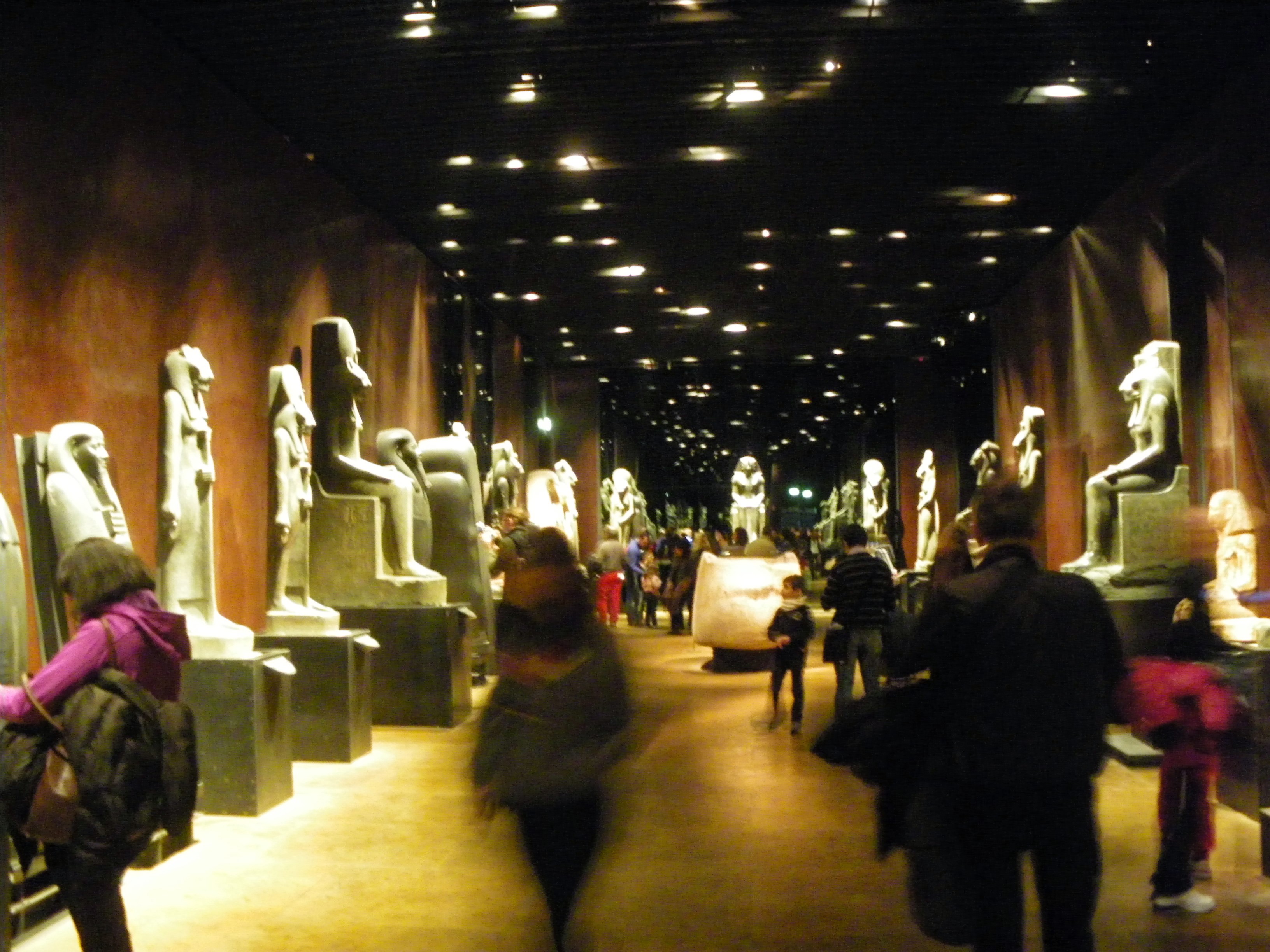Keeping Up With The Times: The Museo Egizio in Turin | Italy

As part of ASEF’s Call for Articles: Latest Trends in the Museum Sector in Asia and Europe, Medea Santonocito introduces the Museo Egizio in Turin, Italy to identify successful trends related to the museum’s role in the local community, the use of its spaces, and technology.
Cover Image: Papyrus from Kha’s Book of the Dead dating to 1425-1353 BCE. Photo credits: Museo Egizio, shared under Creative Commons licence CC BY 2.0.
Introducing the Museo Egizo
Turin’s Museo Egizio (Italian for Egyptian Museum) was founded in 1824. It houses the second largest collection of its kind: 4,000 years of Ancient Egyptian history and art represented by roughly 40,000 items. In the year 2019, prior to the start of the Covid-19 pandemic, more than 850,000 people visited the Museo Egizio. It has also proven itself to be a cultural institution able to adapt creatively to our challenging times: having successfully acculturated itself with the pandemic and keeping its audience engaged through the use of social media and online technology.
The Museo Egizio is a good case-study to understand what the future may hold for the museum sector and its various institutions.
The following seem to be key points of its strategy: being an active member of the local community; making its spaces available for a range of purposes so to attract different groups; integrating traditional practices with technology to create new ways of sharing its collections.

Sphinx dating to 1292-1250 BCE. Photo credits: Museo Egizio, shared under Creative Commons licence CC BY 2.0.
The Museum as a Member of the Community
One of the things we have learned to appreciate during the current pandemic is the importance of our local community. This is true for museums as well. Blockbuster exhibitions and large crowds of international tourists are not back yet, and as such, many cultural institutions have invested resources in activities involving their local visitors. The Museo Egizio has initiated a series of small temporary exhibits, called Nel laboratorio dello studioso (“In the researcher’s workshop”), which inform the public about the research process that is carried on daily on the artefacts displayed. These exhibitions are clearly aimed at local visitors and have the advantage of being less costly and more sustainable, especially considering the long-term effects of COVID-19 on funding.
Additionally, the Museo Egizio has long played an active role in the community and will continue to do so. Among the core values of the museum is the belief that the collections preserved in its galleries are a collective heritage which must be accessible to everybody, even to those who can’t visit in person. In this context, the ongoing project called Liberi di imparare (literally, “Free to learn”) was born in 2018 as a collaboration between the museum, the city’s penitentiary institute housing people in pre-trial custody, and Turin’s art schools. The inmates have the chance to produce copies of some Ancient Egyptian artefacts included in the collections. The reproductions would then be used for some educational activities involving the young patients of the city’s paediatric hospital.

Turin's Museo Egizio, one of the galleries. Source: Wikimedia Commons.
Museum Spaces: Different Purposes, Different Visitors
In a similar way, also the museum’s spaces should be accessible to as many people as possible. That is why the Museo Egizio has diversified its offerings, appealing to various groups who may be interested in visiting the galleries for different reasons.
First of all, the museum has become a research hub where international researchers can work on the collection’s artefacts. The results of such studies are periodically shared with the wider audience during conferences held in dedicated spaces within the museum’s premises in Turin as well as on its online YouTube channel. Transparency is indeed another core value of this cultural institution, and it is a way to let the non-specialist public know what is happening behind the scenes.
Secondly, the Museo Egizio has shown an open-minded approach to the use of its premises. This is particularly true when it comes to hosting other artistic showcases, like classical music, silent WI-FI concerts, and – last but not least – music videos. In 2020, the popular Italian singer and songwriter Mahmood decided to shoot the video of his song, Dorado, into the galleries of the museum. This is a good example of how a cultural institution can be a source of inspiration and create bridges not only between different forms of art but also between older and younger generations. Finally, in 2021, a digital scenography inspired by the museum’s galleries was projected during the Aida performed at the Arena Opera Festival in Verona.
Technology and Traditional Practices
Some trends introduced during the ongoing pandemic are definitely here to stay. Online technologies have allowed museums to extend their collections into the digital world, making them available to anyone, anywhere. Worth mentioning is the Turin Papyrus Online Platform (TPOP), a free and open database created to preserve and share the papyri collection with academics, teachers and other interested audiences, as well as to foster collaboration among similar institutions of culture and heritage. The current goal of the museum is to further expand the database. In 2020, this initiative received the European Heritage Award | Europa Nostra Award in the Research catagory.
At the Museo Egizio, technology integrates traditional practices to preserve and showcase extremely delicate artefacts and human remains – as in the case of mummies. The exhibition entitled Archeologia invisibile (“Invisible archaeology”) tells the visitors about the biography of the items displayed, applying technologies used in archaeological investigations. Without even touching them, two mummies are digitally unwrapped through X-Rays and CT scans so audiences can observe what lies beneath their linen bandages. This less invasive method of display provides visitors with a 3D reproduction of the jewels and amulets still carried on the bodies. Through these displays, audiences can get further educated on the subject’s personal histories, health, and conservation status, which are often nuanced and invisible to viewers.

A mummy’s digital unwrapping, image from the exhibition "Invisible archaeology". Photo credits: Museo Egizio.
By looking at the Museo Egizio’s practices we can see what the crucial objectives in the museum sector are. Firstly, it is important that museums contribute proactively to the life of their local community. Transparency and accessibility are two keywords here, especially in relation to their collections and spaces, so that a range of different visitors can find interest in the museums’ activities. Finally, as this experience has shown, technology should not replace traditional practices but rather integrate them. In terms of technology, adopting an open-minded and multidisciplinary approach is key to create innovative experiences for the public. All these factors can give us a hint about how the museum of the near future will look like.
About the author:
Medea Santonocito is an Italian freelance translator and writer with a strong interest in cultural heritage and history. Based in Edinburgh, UK, she has co-authored a book about the life of a pharmacist and photographer during World War 1 (Il fondo fotografico di Gio Batta Sina 1885-1967) and has written for several websites, including European Heritage Times, Fattiperlastoria.it, and World History Encyclopedia.
Similar content
posted on
01 Feb 2012
posted on
15 May 2012
posted on
10 Mar 2012
posted on
29 Mar 2012
posted on
30 Nov 2011

